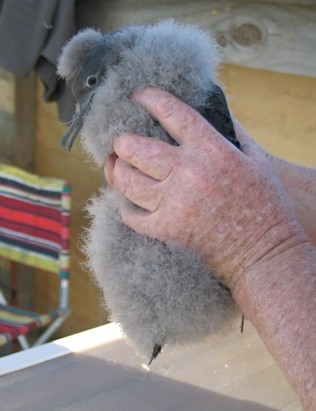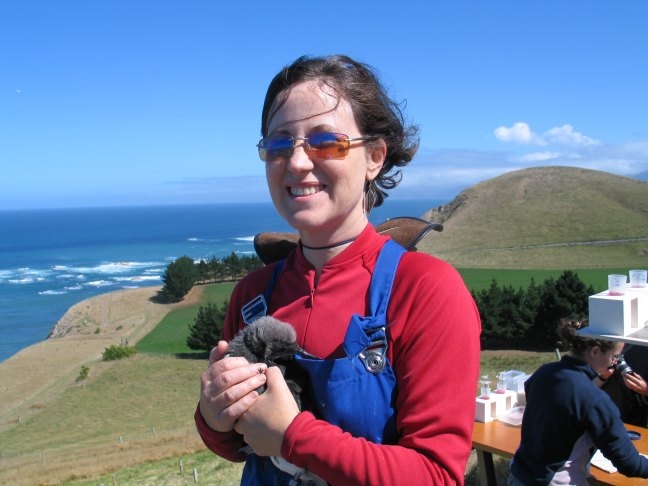Endangered Shearwaters Find a New Roost
Guest blogger: Chairperson for the Kaikoura Branch, Ailsa Howard
While DOC has been busy crafting dummy sea-lions in an attempt to attract males ashore, the Kaikoura community along with the local DOC staff have been involved in a charade of our own: playing the call of the endangered Hutton’s shearwater through loud speakers, in bid to get them to return to their new breeding site.
Each night, the call wafts over the Kaikoura peninsula to draw the inbound traffic from Australia to their brand spanking new home dotted with over 100 wooden nesting boxes. And so far, it seems we have been successful – quite a feat given that these birds are used to nesting in (curiously) alpine, snowy climes – not grassy sea-side knolls.
Spearheaded by DOC and supported by a variety of community organisations, the programme involved helicoptering 300 titi (young shearwaters) from their mountainside nests between 2005-2008 to this new site so they would ‘imprint’ on the site and return here after their overseas travels..

A chick that is about to be transferred to its new home
I’ve yet to clap eyes on any of the 300 chicks that I nursed over several months with sardine smoothies before their flight to the fish-rich waters off the Australian coast, however the odd feather and shearwater poop has confirmed their return.
If this recovery programme is successful it will bring the nesting sites of our Hutton’s shearwater to a grand total of three nesting sites. Since their re-discovery in the Seaward Kaikoura mountains by ornithologist/mountaineer Geoff Harrow in the 1960s, the number of nesting sites has declined from 8 to 2.
Listed as ‘endangered’ due to the continual threat of predation from pigs and other introduced mammals, and the unstable and precarious nature of the terrain where they breed, the future of the species is looking brighter due to the establishment of this third colony.
Ironically our attempts to stop these predators by placing traps around the new colony site led to a disappointing the discovery of a shearwater that had fallen foul of one of these traps, highlighting the urgency for a predator proof fence.
Making this a reality will involve some vigorous fundraising and, once the fence is up it’s hoped that other endangered species can join them – rare lizards, native birds – who knows?

Me with a young shearwater
If you are inspired to donate to the Shearwater Recovery Programme, please contact the Trust though treasurer lindsay.jan.rowe@xtra.co.nz
